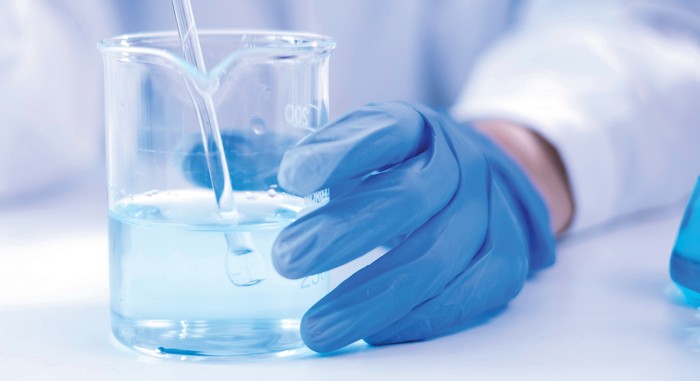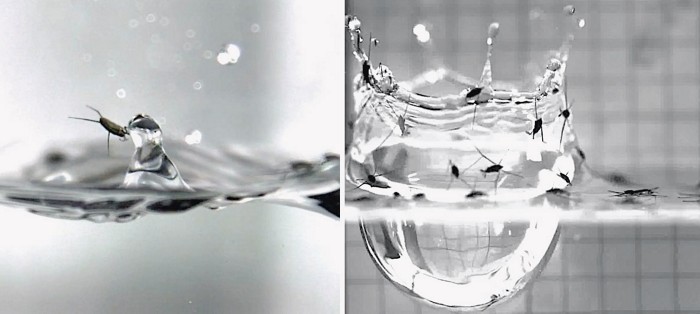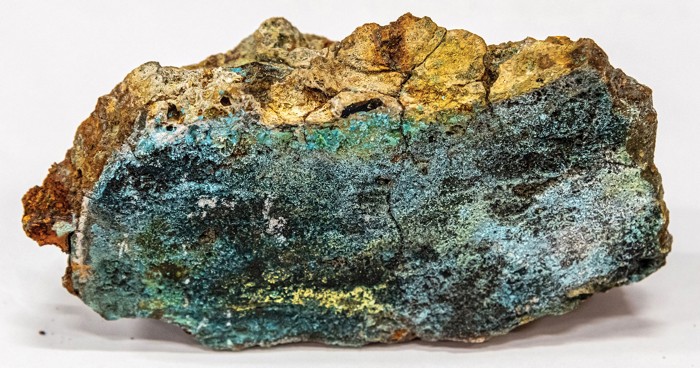Advertisement
Grab your lab coat. Let's get started
Welcome!
Welcome!
Create an account below to get 6 C&EN articles per month, receive newsletters and more - all free.
It seems this is your first time logging in online. Please enter the following information to continue.
As an ACS member you automatically get access to this site. All we need is few more details to create your reading experience.
Not you? Sign in with a different account.
Not you? Sign in with a different account.
ERROR 1
ERROR 1
ERROR 2
ERROR 2
ERROR 2
ERROR 2
ERROR 2
Password and Confirm password must match.
If you have an ACS member number, please enter it here so we can link this account to your membership. (optional)
ERROR 2
ACS values your privacy. By submitting your information, you are gaining access to C&EN and subscribing to our weekly newsletter. We use the information you provide to make your reading experience better, and we will never sell your data to third party members.
Water
Layers in ionic solutions may be more complex than previously thought
Simple electrolytes can also show subsurface activity, scientists find
by Payal Dhar, special to C&EN
February 8, 2024

Researchers have long thought that a layer of either positively or negatively charged ions gathers at an electrolyte solution’s surface, with a second layer of ions of the opposite charge just beneath the surface. This electric double layer was believed to play a fundamental role in what happens in the places where air and liquid meet. But for most solutions, that isn’t quite right, according to new research.
A recent study shows that most solutions form a thin layer of pure water at the surface, followed by a layer of concentrated ions. In other words, they are subsurface active, says Mischa Bonn of the Max Planck Institute for Polymer Research, who led the study. The result is a stratification: the first two layers and then a less-concentrated, bulk salt solution (Nat. Chem. 2024, DOI: 10.1038/s41557-023-01416-6) .
The research team also found new information about the orientation of the water molecules at the surface. Existing models show them either with the hydrogen atoms or the oxygen atoms pointing upward, depending on the surface activity. But in the absence of surface activity, there seems to be no preferential orientation, according to the team.
The surface activity of electrolyte solutions can be hard to ascertain because the energies involved are so small that it is difficult for simulations to provide unambiguous answers, Bonn says. His team developed a laser spectroscopy technique that is surface sensitive, measuring the vibrations of the water molecules in the region, while suppressing the signals from water molecules in the bulk solution. The team combined the resulting data with machine learning-based molecular dynamics simulations to arrive at their final results.
Understanding the reactivity of molecules at the surface of water, and of ions themselves, is important for creating better climate models. Also vital is understanding the photochemistry occurring on aerosol droplets, which is determined by the organization of molecules and ions at the surface. “Our work aims at getting [these] molecular-level insights and understanding of the physics and chemistry that occur at these surfaces, so we can improve those models,” Bonn says.
The researchers also feel that their technique could give them unique insights into other interfaces. “We are using those right now to look at batteries,” including the interfaces between the electrolytes in the batteries and both air and electrodes, Bonn says. His team also wants to look into more complex mixtures of ions, the role of organic ions in these systems, and how those factors affect water organization.
Charlie Wand, a researcher from the University of Exeter, and Mirza Galib, an assistant professor at Howard University, both find the paper to be an important addition to fundamental chemistry research. Wand says the study exemplifies how experimental and computational methods can complement each other.
Galib adds that not only is studying the chemistry at the surface of aerosols and oceans important, but looking at the “ion distribution at the air/water interface and solid/liquid interface is very fundamental to a lot of chemical and industrial development.”




Join the conversation
Contact the reporter
Submit a Letter to the Editor for publication
Engage with us on Twitter